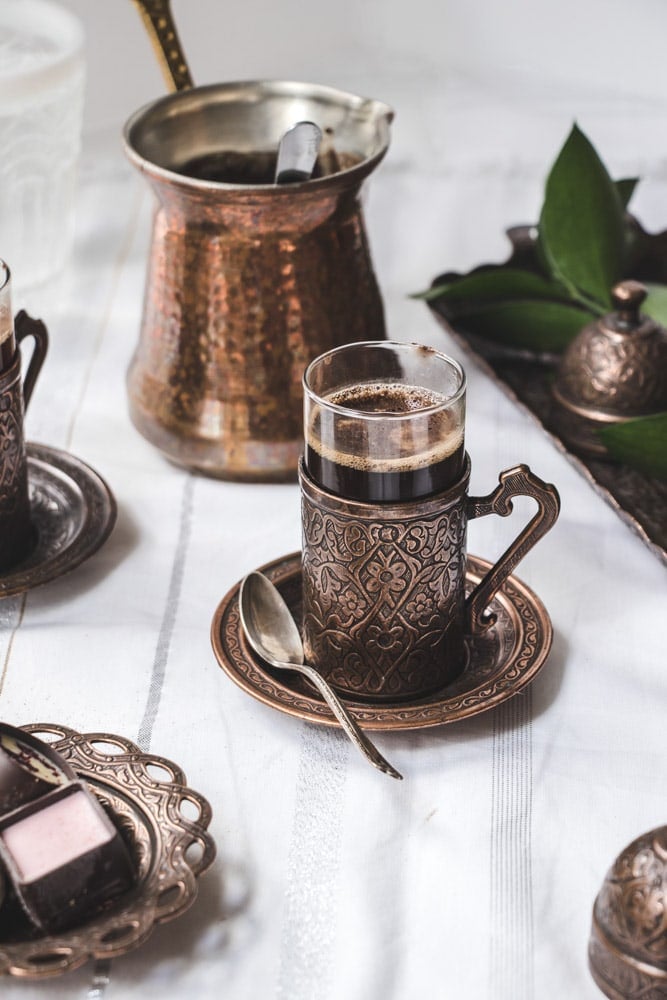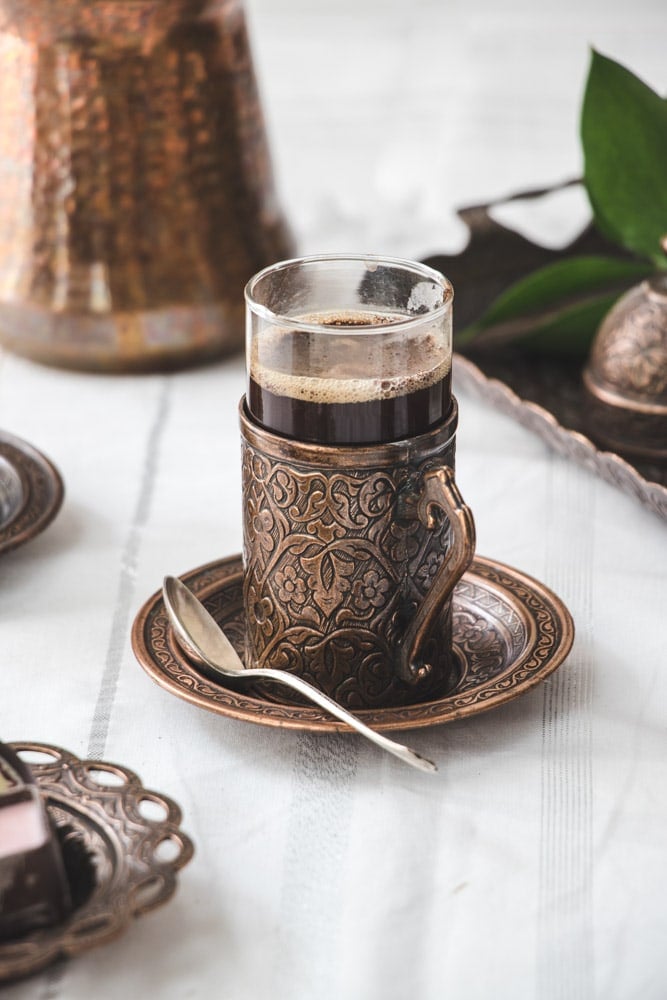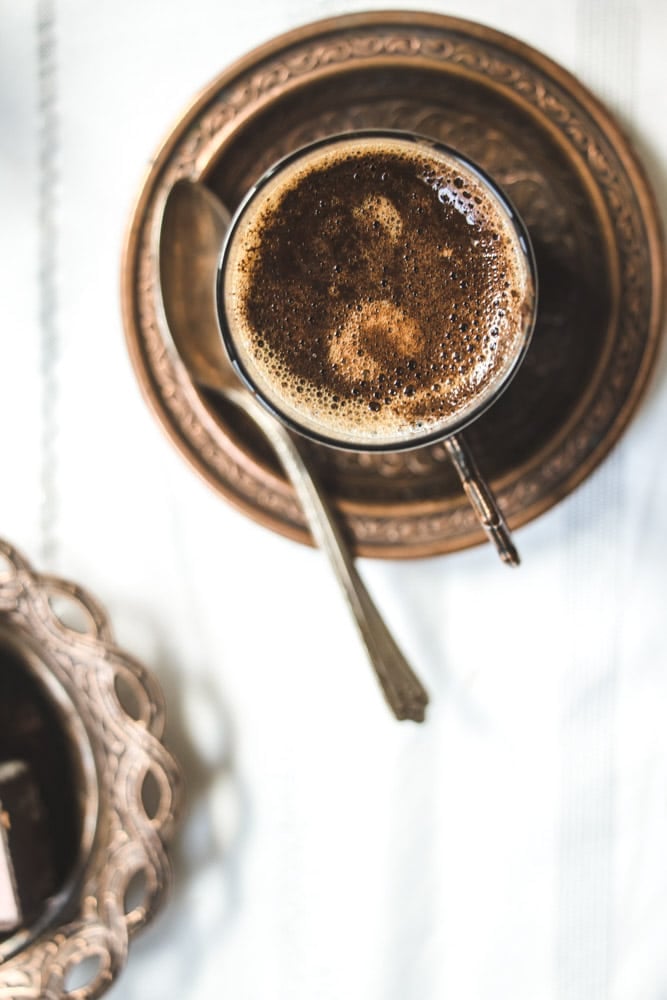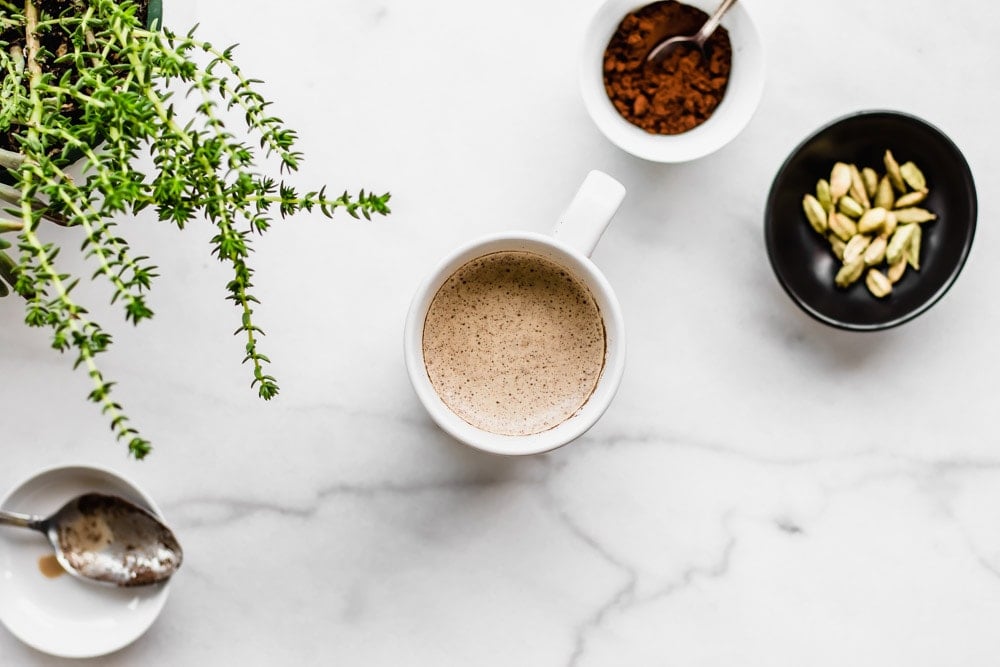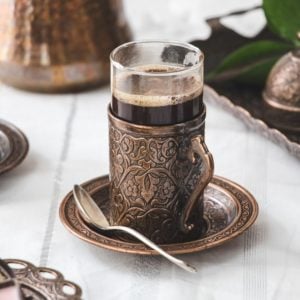My Turkish Coffee Story
If I could, I would travel to each country in the world and sip on their signature hot drinks. Matcha in Japan, mint tea in Morocco, pink chai in Kashmir. I wouldn’t want to do this in touristy cafés, but with some locals, friends I’ve made perhaps, the warmth of their hospitality included. Enter your email below and get it sent straight to your inbox. Plus, get recipes & tips every week! This reminds me of my friend, Serpil, who taught me so much about hospitality and Turkish culture. We would sip chai at my house and Twinings Earl Grey tea at hers because it reminded her of the tea she loved from back home. She never mentioned Turkish coffee though. I later found out she thought it was too strong. I learned about Turkish coffee from a cheery Arab lady at the counter of an incense-laden Middle-Eastern grocery store. She was joyous and full of life and I can still picture her casually dancing to ‘3 daqat’, telling me how delicious this coffee is. She insisted I needed an ibrik (also called cezve), the Turkish coffee pot, to make Turkish coffee. But I didn’t want to invest in the pot only to realize I didn’t like it. I bought a tiny bit of coffee from their bulk section to try before I committed to buying the entire box. Little did I know, it would become my chosen morning drink for months. I’d be buying several more boxes.
Why Turkish Coffee
I’m not going to pretend I know much about coffee. I really don’t. In a typical Pakistani household, we have instant coffee granules tucked away in a cabinet for when a coffee craving strikes. That milky instant coffee we make is nothing like a specialty, craft coffee. That’s where Turkish coffee comes in. The reason I’m drawn to Turkish coffee is that it allows me to drink exceptionally tasty coffee in a familiar way. I don’t need a coffee machine or French press, but I can drink coffee so smooth that it rivals many cafes. There’s something extra special and relaxing about Turkish coffee, and I love that I can make it as easily as I would make chai.
Why traditional Turkish Coffee requires a Turkish Coffee Pot
Like my friend Serpil, I don’t prefer the dense espresso shot-like Turkish coffee on a daily basis. That’s why I often have a less intense, milky version of Turkish coffee that becomes something like a latte. The reason you need an ibrik to make traditional-style Turkish coffee is that helps the signature foam rise on top because of the small surface area.
More Tips and Notes on Turkish Coffee
Stir the coffee and water before placing on medium heat. I’ve found (after several experiments) that this increases the amount of foam on top. Pour the coffee into the cups slowly and do not stir once you have poured it in. This is all to help retain the foam as much as possible. It is normal for the coffee to settle to the bottom of the cups. Turkish coffee is traditionally served with water and Turkish Delights or other sweets. The small Turkish coffee cups are excellent to retain the foam. If you don’t have them, espresso cups will also work. Most popular brands of Turkish Coffee: Kurukahveci Mehmet Efendi and Alameed.
More Drink Recipes You’ll Love
Traditional Style Turmeric MilkPakistani Chai (Doodh Pati)20-Minute Kashmiri Chai (Pink Tea) To make traditional style Turkish coffee in the saucepan, you’ll have to increase the water (or the number of Turkish coffee cups). Keep in mind that it won’t develop much foam or froth like it would in an ibrik.
Can you make Turkish coffee in a coffee maker?
Yes! You can use ground Turkish coffee in place of regular coffee in your coffee machine. The result is sort of turkish-coffee-ish cup of coffee, which is delicious. The one change you need to make is to add much more turkish coffee than you would if you were making a regular cup. So if you normally use 2 scoops of coffee per cup, start with 4 scoops of Turkish coffee. I have also tried making Turkish coffee using the ‘espresso’ setting. If you have a concentrated setting like that, it works great for Turkish coffee. Keep in mind it’ll still be a diluted than traditional Turkish coffee. If you try this recipe, please let me know on here or tag me on Instagram! I love hearing from you! SaveSave
